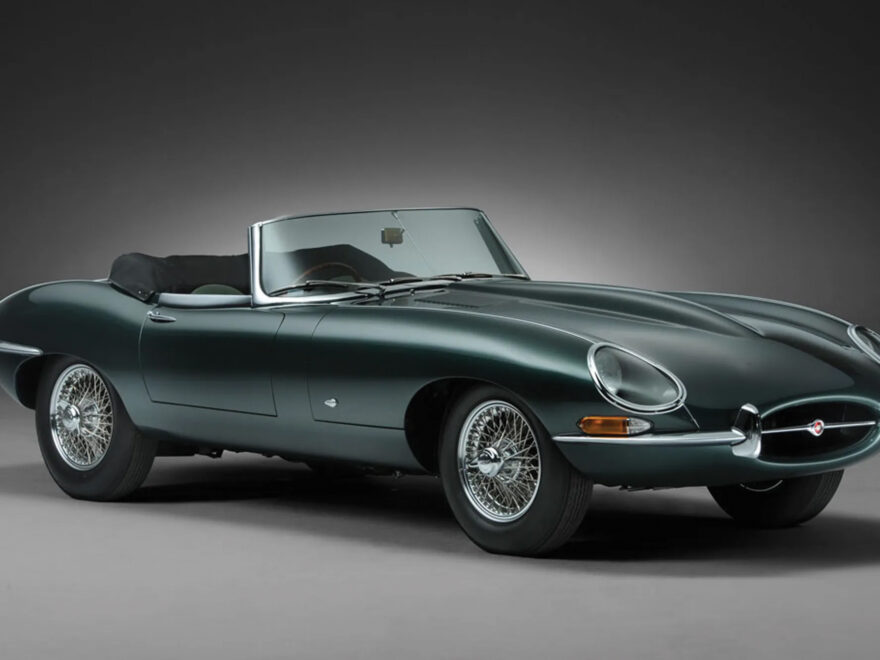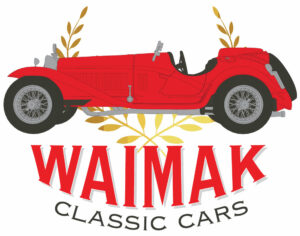The look on the guy’s face said it all. He stared for a good few minutes before he spoke. “Is this an E Type?” he asked. “Sure is” said I. “Wow, its BLEEP-ing mint,” he replied. As I headed inside to pay for gas, the lady at the counter asked which pump it was. I told her pump four, but from her point of view at the counter, she couldn’t see a car there.
A quick glance on her tip toes and she saw this Series 1 Jaguar E Type Roadster gleaming in British Racing Green. “Wow, is that an E Type Jag?” she asked in astonishment, I nodded. “I can’t wait to tell my husband, that is his dream car,” she said, eyes still fixated on the Jag. Suddenly everyone in the Sefton petrol station were transfixed by this low slung classic British sports car.
It doesn’t take a genius to figure out why the Jaguar E Type has stood the test of time. It was and still is, utterly bewitching to behold. Enzo Ferrari himself even described the E Type as the prettiest car ever built. Today, it is classic car royalty, but when it was new, it changed car design for years to come.
The ironic thing is, Jaguar founder Sir William Lyons wasn’t entirely keen on the finished product when the first production coupe and roadsters were presented to him. Believe it or not, he couldn’t see it being a big seller. However, Lyons was eating humble pie when Jaguar launched the E Type at the 1961 Geneva Motor Show. It was an overnight phenomenon.
The demands for test drives were so great that a second factory demonstrator was driven from Coventry to Switzerland overnight by one of the test drivers. It is also said Frank Sinatra saw an E Type on display in New York and declared “I want that car and I want it now.” The demand for the E Type was also down to the fact it cost just 2089 GBP, making it a fraction of the price of a new Ferrari, Aston Martin or Maserati.
The E Type remained in production for 14 years and underwent a variety of changes throughout its life, culminating in the Series 3 V12s of the early seventies. However, it’s the early Series 1 E Types which are by far the most iconic and most coveted today. This brings us on to the simply stunning 1964 Series 1 Roadster you see here.
Under that gorgeous bonnet sits the 3.8L XK straight six engine mated to a four-speed Moss manual gearbox. With 265hp, Jaguar claimed this combo would allow the E Type to reach 150mph flat out. Except it actually wouldn’t. A well-heeled E Type could reach close to 145mph, but the cars they lent to road testers in 1961 were actually lightly souped up. Once the journos got to 150mph, Jaguar knew they could market the E Type, or XKE as it was sold in the US, as the fastest production car in the world.
This example, chassis number 879603 was sold new in New York in 1964. It has had three Kiwi owners, the last of which held onto it for 20 years. It has also been subjected to a full restoration and features Coopercraft disc brakes and an uprated cooling system.
Seeing a Series 1 E like this up close
is like seeing one for the first time.
It is impossible to unglue your mug from that low slung bonnet, those glistening wire wheels with chrome knockoff wheel nuts, the steeply raked windscreen and its curvaceous rear end with minimalist taillights. Any E Type in my view is a looker. That said, a Series 1 Roadster in British Racing Green with its roof folded away to reveal its cream leather interior is not just the pinnacle of Jaguar past and present, but most cars in general.
I could spend hours and hours just staring at this car. Plus, the more you do just that, the more you pick up little details like the bonnet vents, the Jaguar cat emblem on the spindle grill, its airbrushed centre console and those dainty door handles. The latter require a small hand to grip in order to open.
Once you open the drivers door, it is a pretty easy process to get in. Once said door closes with a clunk behind you, you feel so snug and cocooned by your surroundings. The interior is a work of art. Every button and toggle switch looks so exquisitely put together and while that three spoke wood rim steering wheel does come at you a lot closer than you would think, it’s a beauty to hold and to behold.
Starting an E Type Series 1 is a pretty straight forward process. Apply choke if required, turn the ignition key a quarter clockwise and press the small black starter button down. A second or two later the 3.8L XK straight six ignites and settles into a surprisingly subdued burble. It does sound remarkably smooth but a few firm presses of the loud pedal give you a sonorous six pot symphony the likes of which could only come from a Jaguar straight six.
The biggest challenge for any un-intiated, is Jaguar’s four speed Moss gearbox. The shift patterns are remarkably close together and require a positive gentleness when selecting each gear. What is also required when shifting is to double clutch. It goes like this when shifting from first to second. First gear, clutch in, neutral, clutch out, then clutch in, second, clutch out again. It becomes pretty straight forward once you get the hang of it. It is certainly not a gearbox you can bang through the gears. Not that that would be appropriate mind you.
What is appropriate, and what most of us will want to do, is give the E some stick. With the roof down and that six-cylinder opera emitting its torrent of symphonic bliss, the Series 1 can still shift, big time. Apply some throttle, or rather a lot of it, and that long bonnet rises. 80, 90, 100, 110, time to back off, all while turning yours truly into an organic giggle factory.
Even by the standards of today, the E Type is still a properly fast car. It doesn’t leave you breathless with neck snapping acceleration, but I’m actually glad of that. It’s the nature of the delivery which impresses most. Dropping down a cog or two and giving it death is met not with an instant whack but a pronounced surge of power. It gives an experience, and boy what an experience.
I can fully believe this car even today would sit happily at speeds in excess of 230km/h and all in sublime comfort. The ride in typical Jag fashion is supple and provides an almost uncanny mix of being soft when you need it to be and firm when you want to have some more fun. Talking of fun, when the going gets twisty, the E delivers, big time.
Heading towards the rolling hills near Ashely Gorge, the roads start to climb, fall, twist and turn. Here is where the E plays its joker, it is an incredible handler. With no power assisted steering, you know exactly what those front wheels are up to at any given moment. Some say the chassis of the E Type is so well sorted that you can steer with the throttle. You know what? You sort of can.
Feed in the right mix of lock and oomph and you can glide from corner to corner with such ease and little effort required on your part. Honestly, there are newer cars which aren’t set up as well as this. It also gives you the confidence to push even harder in each bend. The Jag likes to be driven well, and when you get that corner just right, it talks to you as if to say “well done old boy, care to have another go?”
I didn’t want this drive to stop. However, those few hours, a realisation of a long-held dream, went by all too quickly. The Jaguar E Type Series 1 is one of the most enchanting classics ever. Boy, do I envy whoever snaps this one up.
Ben Selby


